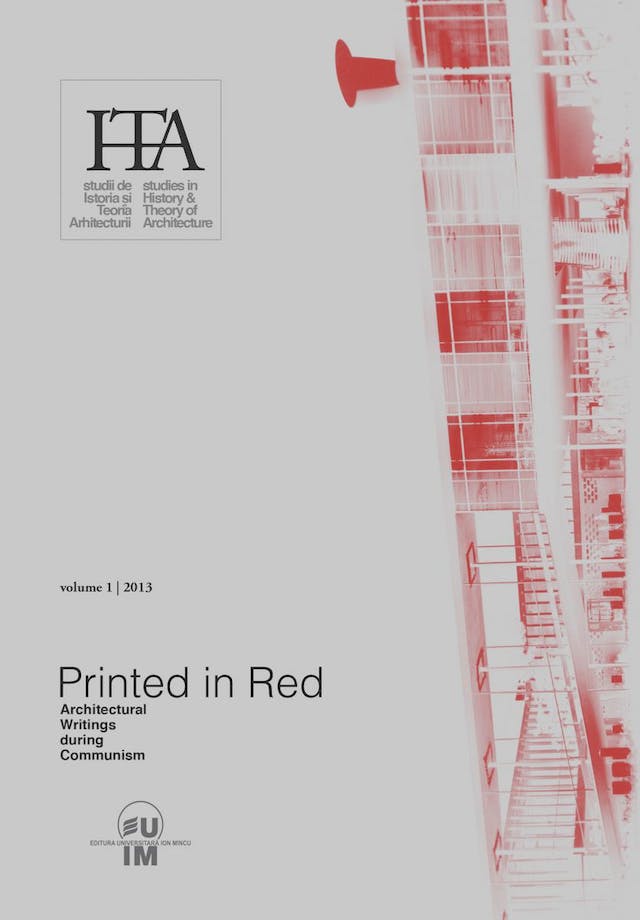“Taste Must Arise from the Doctrine”Architecture in the Hungarian Cultural Media in the 1960s
“Taste Must Arise from the Doctrine”
Architecture in the Hungarian Cultural Media in the 1960s
by
Mariann Simon
Keywords
Modern architecture
socialist lifestyle
ideology
artistic value
cultural media
1960s
The conscious, politically driven consolidation of the socialist regime after the failed revolution of 1956 resulted in an optimistic period of the long Kádár-era: the sixties was the decade of thaw, breathing more freely, new chances, more freedom and raising living standard. Architecture was also touched by the reorganisation of the political and economic system. In the first part of the 1950s Hungarian architecture – similarly to the whole socialist camp – was characterised by a state-required traditionalism. Politics used architecture for representing socialist ideology and power, but in return architecture was regarded as an art. Architects celebrated the regaining of modern architecture, but they did not want to give up their position in the world of art, or their role as the doctor of the (socialist) society. To develop the intended image architects turned to the cultural media. The first part of the essay examines how professionals – theoreticians, scholars and leading experts – tried to popularize modern, technology-based architecture, to prove its relevance in socialism and explain its artistic beauty. The second part considers the other party: how did the lay intellectuals who mainly represented the area of humanities expressed their expectations concerning the social role of architecture.
The author of most articles written with the intention to explain contemporary architecture was Major Máté, the father of socialist architectural theory. He stated that only those buildings can be truly beautiful which are good as well, that is industrial building production is not necessarily excluded from attractive architecture. However, he differentiated between beautiful and artistic: artistic architecture is not only beautiful but it also conveys notional content, the notional content of rising socialism. Major refined his demands on socialist architecture over time. The backwardness in materials, details and technologies of Hungarian building industry compared to modern architecture in the West became increasingly visible. Quantitative requirements for building production became the main source of constraints in architectural quality. Major adapted the Marxist architectural theory to the realities: soon he already called for the conscious undertaking of necessities, which may result in a beautiful even in an artistic architecture. By the middle of the decade the capitalist connotations of modern architecture had ceased and the social commitment of classical modern architecture came to the fore. This led to the adoption of modern architecture as a relevant approach in socialism. Scholars tried to explain the artistic value inherent in modern architectural classics, though it was not easy with the reality of socialist modern architecture in the background. However the biggest problem lay in the fact that the architects’ intention was the distribution of – politically, socially or professionally based – ideas. They did not realise that the ideological aspect of architecture decreased during the sixties parallel with the general tendency that ideology had a defensive character in the Kádár-era, which established the basis of the system. Neither were approaches without ideological aspects written to generate discussions, instead the authors intended to explain artistic values of architecture.
While scholars intended to convince intellectuals about architecture’s ideological and aesthetic value, readers of the cultural media were touched by the question: What is the relationship between architecture and society? The first discussion took place in 1960-1961, the topic was launched by a journalist-poet and the majority of the fifteen contributors belonged to the literary world. The first group of contributors agreed with the statement that the way of housing has a defining effect on our way of living, and believed in the educational power of architecture. The second group approached the problem from the concept of home and focused on the user and the society, while the third group tried to find the consent of both parties. The debate was officially closed by the comment of the minister for Building Affairs, which expressed that the practical demand of eliminating the housing shortage got primacy over the imagined socialist way of living as a declared ideology, as well as over a better architectural quality, based either on modern ideals, on recent urban developments or on social research. The second discussion of 1967 already mirrored a change in the situation: the existing socialist modern architecture had several practical shortcomings which overshadowed questions of ideology and artistic quality. This discussion was rather one-sided, because all the reflections came from the profession and all tried to pass responsibility. Not a single comment questioned the description of the keynote study that socialist architecture failed concerning both its functional and artistic aspect: namely it is neither functional nor beautiful. The majority of scholars who explained architecture in the cultural media – with a few exceptions – were convinced that they know better what people and users need, so it is not surprising that when the problems around architecture and town planning began to multiply they were blamed for almost everything. Modern architecture as a socialist doctrine defeated architecture as culture.
Published in

Chicago citation style
DOI:
10.54508/sITA.1.05